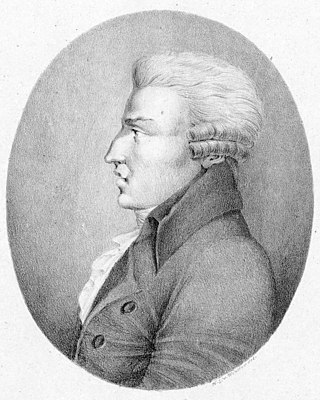
Francesco Durante was an Italian composer of the Neapolitan School. Best known for his church music, he was also an important teacher, instructing Niccolò Jommelli, Giovanni Paisiello, Giovanni Battista Pergolesi, Niccolò Piccinni and Leonardo Vinci, among others.

Giovanni Battista or Giambattista Martini, O.F.M. Conv., also known as Padre Martini, was an Italian Conventual Franciscan friar, who was a leading musician, composer, and music historian of the period and a mentor to Mozart.
Cristofano Malvezzi was an Italian organist and composer of the late Renaissance. He was one of the most famous composers in the city of Florence during a time of transition to the Baroque style.

Giovanni Bononcini was an Italian Baroque composer, cellist, singer and teacher, one of a family of string players and composers. He was a rival to George Frederic Handel.
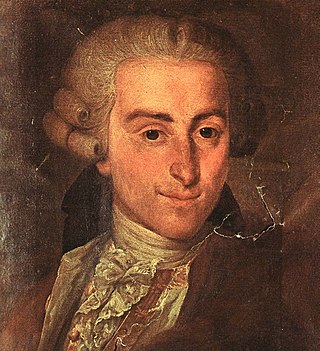
Giovanni Battista Sammartini was an Italian composer, violinist, organist, choirmaster and teacher. He counted Gluck among his students, and was highly regarded by younger composers including Johann Christian Bach. It has also been noted that many stylizations in Joseph Haydn's compositions are similar to those of Sammartini, although Haydn denied any such influence. Sammartini is especially associated with the formation of the concert symphony through both the shift from a brief opera-overture style and the introduction of a new seriousness and use of thematic development that prefigure Haydn and Mozart. Some of his works are described as galant, a style associated with Enlightenment ideals, while "the prevailing impression left by Sammartini's work... [is that] he contributed greatly to the development of a Classical style that achieved its moment of greatest clarity precisely when his long, active life was approaching its end".
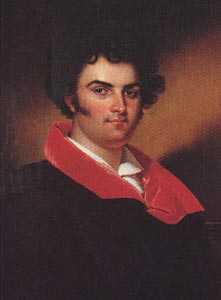
Giovanni Battista Rubini was an Italian tenor, as famous in his time as Enrico Caruso in a later day. His ringing and expressive coloratura dexterity in the highest register of his voice, the tenorino, inspired the writing of operatic roles which today are almost impossible to cast. As a singer Rubini was the major early exponent of the Romantic style of the bel canto era of Vincenzo Bellini and Gaetano Donizetti.
Giovanni Battista Pescetti was an organist, harpsichordist, and composer known primarily for his operas and keyboard sonatas. Musicologist and University of California, Santa Barbara professor John E. Gillespie wrote that Pescetti "stylistically stands as a bridge between Alberti and Domenico Scarlatti".
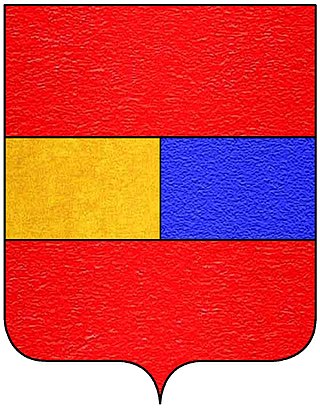
Balbi is the surname of the ancient noble Roman Family of Balbi where after the fall of the Western part of the Roman Empire and during the middle ages expanded in Venice, Genoa, Constantinople, Greece, Spain, Germany, Malta and other places. Balbi is one of the few surnames that has remained unchanged over the centuries and was one of the most famous prominent and wealthy families in Italy. Members of the Balbi family held high rank positions and noble titles such as Patrician, Senators, Dukes, Doge, Barons, Marchese, Lords e.t.c in the Maritime Republics of Venice and Genoa, the Eastern Roman and Holy Roman Empire of the German Nation, enganed in piracy, maritime trade, stock market and war activities where acquired wealth and power. Later in history many Balbi's participated in historical events such as revolutions, battles or served as Generals, Members of Parliament and Prime Ministers in many countries.

Pier Francesco Mazzucchelli was an Italian painter and draughtsman who was active in Milan. He is mainly known for his altarpieces, but his outstanding achievements are large decorative frescoes for the Sacro Monte di Varese and the Sacro Monte di Varallo.

Mantua Cathedral in Mantua, Lombardy, northern Italy, is a Roman Catholic cathedral dedicated to Saint Peter. It is the seat of the Bishop of Mantua.
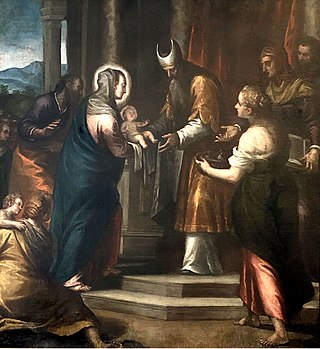
Alessandro Maganza (1556–1630) was an Italian painter of the Mannerist style, born and active in Vicenza, as well as in Venice.
Giovanni Battista Bassani was an Italian composer, violinist, and organist.
Simone Molinaro was a composer of the late Renaissance in Italy. He was especially renowned for his lute music.
Giovanni Battista Fasolo, O.F.M.Conv, was a Franciscan friar, organist and composer.
Ignazio Cirri or Giacomo Matteo Ignazio Cirri was an Italian organist and composer in the 18th century. He was the brother of composer Giovanni Battista Cirri and the father of composer and violoncellist Giovanni Battista Cirri. He was born and died in Forlì. He was a friend of Giovanni Battista Martini, who had a portrait of Ignazio Cirri among his valuable men's portraits. In 1759, he became Maestro di cappella in the Cathedral of Forlì and he was admitted in the Philharmonic Academy of Bologna.
Giovanni Rovetta was an Italian Baroque composer and maestro di capella of the Capella Marciana at St Mark's Basilica, Venice between Monteverdi and Cavalli.

Pietro Paolo Bencini was an Italian Baroque composer and Kapellmeister. He was the father of Antonio Bencini, who was also known as a composer of sacred works.

Sant'Agostino is a gothic-style, Roman Catholic church located in Cremona, region of Lombardy, Italy.

The Conservatorio Giovanni Battista Martini is a college of music in Bologna, Italy. The conservatory opened on 3 December 1804, as the Liceo Musicale di Bologna. It was initially housed in the convent at the Basilica of San Giacomo Maggiore. The first faculty at the school included the composers Stanislao Mattei and Giovanni Callisto Zanotti, and the composer and singer Lorenzo Gibelli. Gioachino Rossini was a pupil at the school beginning in 1806, and was appointed head of the school in 1839. Later directors of the school included Luigi Mancinelli (1881–1886), Giuseppe Martucci (1886–1902), Marco Enrico Bossi (1902–1911), and Cesare Nordio (1925–1945).











